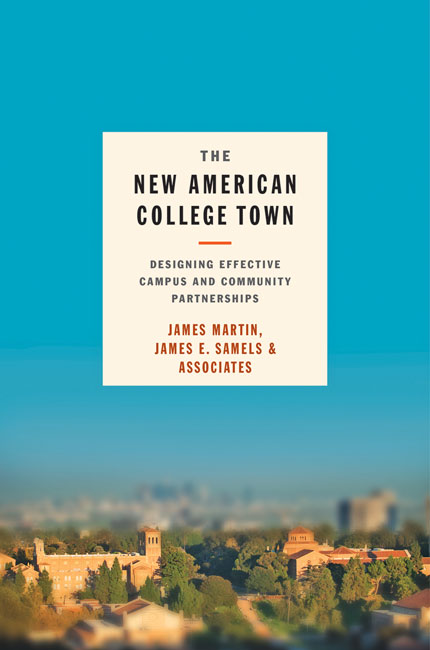Whether a college exists side by side with local industry or is the main economic driver for its region, the institution’s leaders must partner with organizations in the community around them to thrive. Town-gown relations are expanding into innovative areas nationally and internationally, with student programs and services getting moved to downtown developments.
University Business spoke with James E. Samels, CEO and president of The Education Alliance and founder of the higher ed focused law firm Samels & Associates, about his book, The New American College Town (Johns Hopkins University Press, 2019), which includes action plans, lessons learned and pitfalls to avoid in developing transformative relationships between colleges and their extended communities. A collection of essays from a variety of higher education thought leaders, the book covers the new definition of college towns, how presidents must launch effective partnerships with the community, and how others across campus contribute to such efforts.
UB: What motivated this book?
Samels: The book is all about new, bold and upstart college towns, rather than venerable yet stodgy college towns such as Ann Arbor, Michigan; Burlington, Vermont; Cambridge, Massachusetts; College Station, Pennsylvania; Hanover, New Hampshire; Potsdam, New York; Princeton, New Jersey; and Stanford, California. At the end of the day, there was a paucity of published works in this emergent field of keen interest.
UB: What was the most pleasant surprise and what was the biggest disappointment discovered in your research?
Samels: The most pleasant surprise and hidden jewel was discovering the intimate economic connection between colleges and towns. Just because a college is in a town does NOT make the town a College Town.
In the course of monetizing this campus-connected Downtown Renaissance, we learned we were creating a major stimulus for mutual economic and workforce development and growth—creating sustainable jobs that populate both Downtown and the Campus.
The biggest disappointment in our investigation was that even if all college town ingredients existed, political turf and credit-taking may prevail over a group of like-minded business and civic leaders just wanting to do the “right thing.” In some cases, there is a reticence—indeed, a resistance—to transformative change. Half of the focus groups think the town was moving too fast, and the other half asked what took so long for the town to discover it was a college town. That is like asking my pups to walk on water and then saying, “dumb dogs can’t swim.”
UB: Is it realistic to expect a comeback among America’s traditional and new college towns?
Samels: Contrary to some popular misconceptions, we see a new demographic migration from big-city college towns to “New American Colleges” in the wake of the eventual post-pandemic. Students, parents, business and civic thought leaders still want to congregate and engage in the “new normal.” Newer, smaller, and more intimate college towns will likely grow organically over time as we move beyond this public health catastrophe.
UB: How can colleges and universities can best partner with their host towns?
Samels: The best new college town projects are planned, willful and intentional. We need to come out of the Ivory Tower and engage in the civic life of the host town—attending board and commission meetings, inviting town officials on campus and celebrating the special relationship between colleges and their host towns. Colleges need to be visible in the downtown community and its leaders recognizable by the citizenry. Conversely, town officials need to visit the campus and get an opportunity to engage with students, faculty and staff.
The next generation of college town thought leaders will have a rare chance to shape the culture and vibe of “The New American College Town.”



